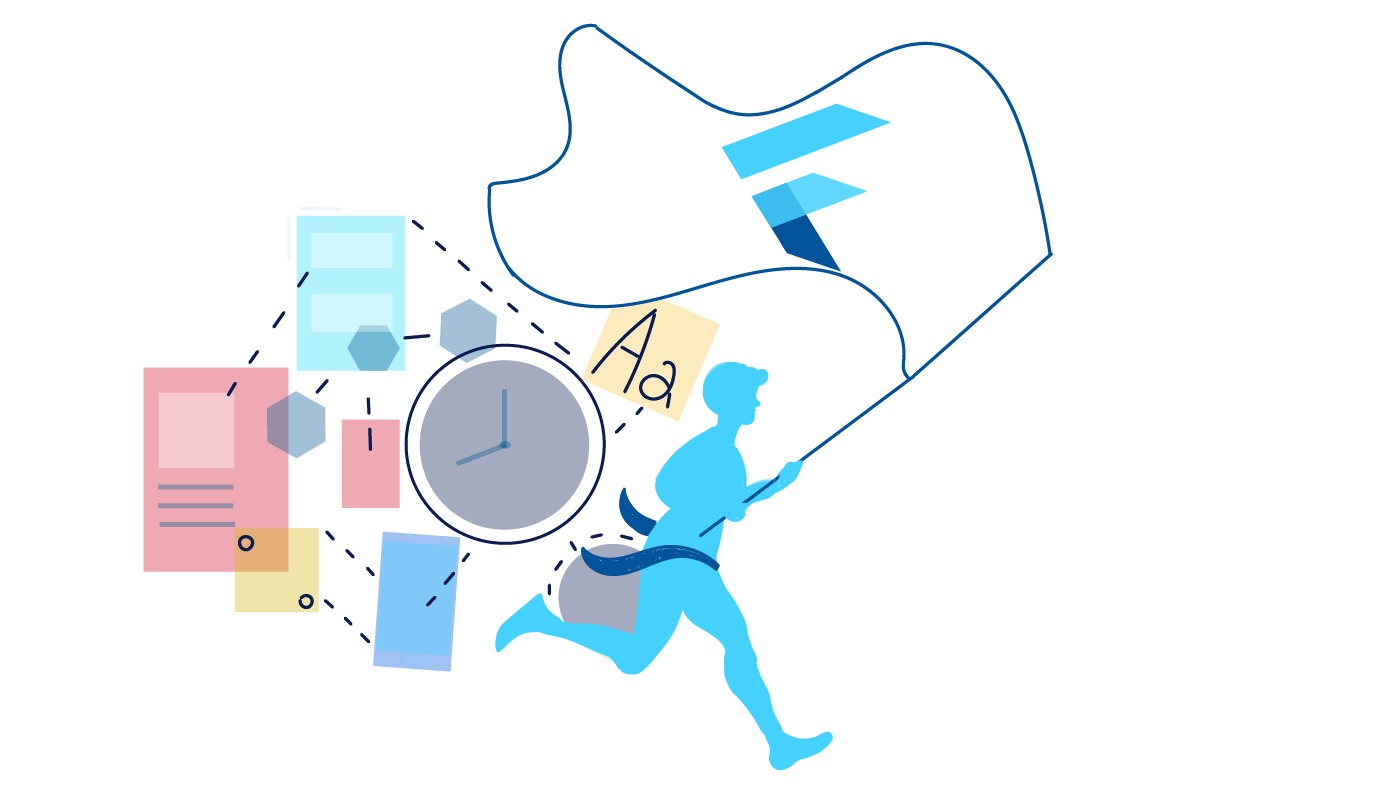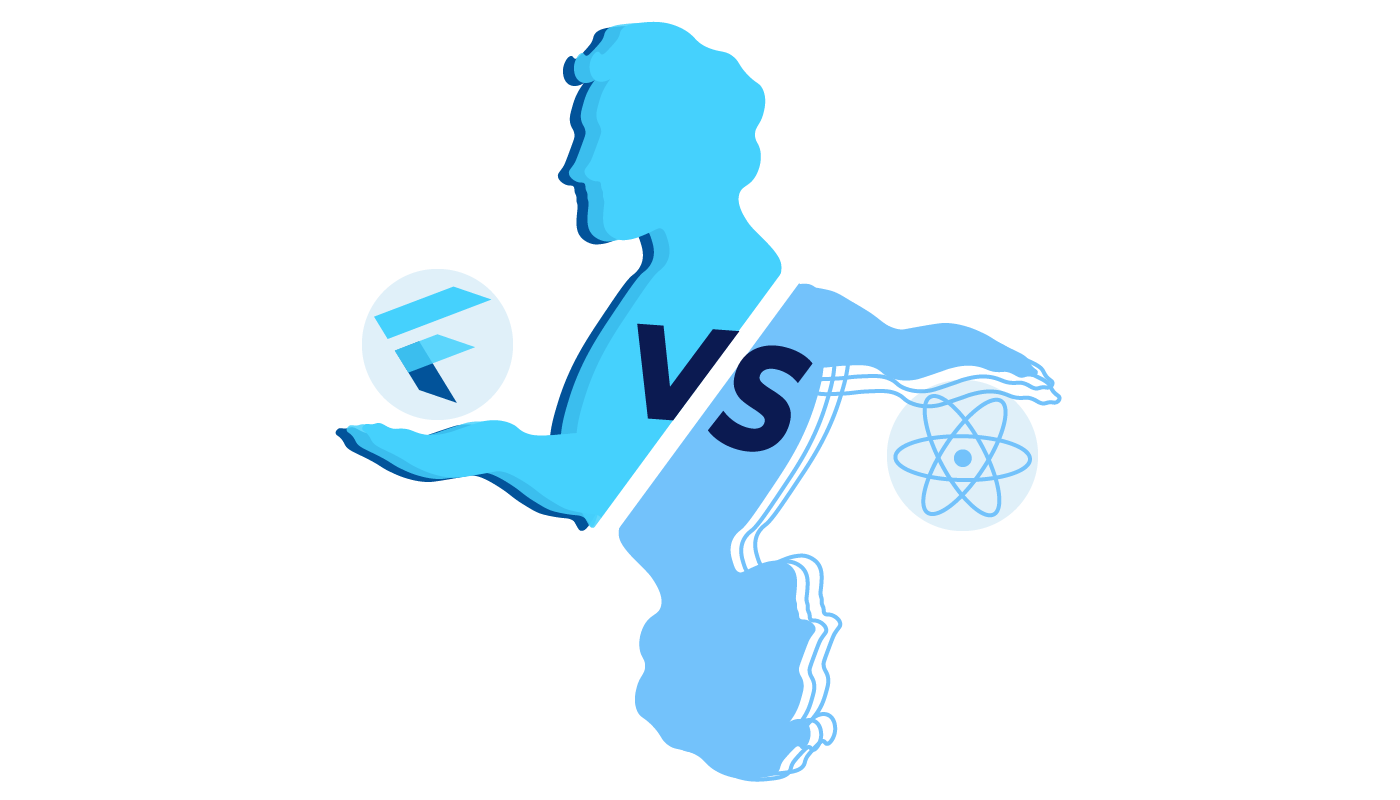When Flutter was first introduced to the world in early 2017, it marked the first efforts of large corporations in stepping aside from cut-and-dried software and then allowing developers to build appealing applications that would run on mobile platforms with the perspective of scaling to desktop and web. While some skeptics did not believe that Flutter would be much different from other cross-platform development tools, such as React Native or Xamarin, but three years later, we observed multimillion corporations were adopting this technology. Today, we use Flutter apps when we run a new campaign in Google Ads or make a purchase on Alibaba. Even with so many alternatives out there, why do world-known companies prefer Flutter to other tools? That’s what we’re going to figure out!
What is Flutter and How Does It Work?
Being a birth child of Google, Flutter was quickly gathering steam with its highly customizable widgets, mild learning curve and high performance. Unlike its cross-platform counterparts, such as React Native or Xamarin, Flutter is a mobile app SDK that seamlessly integrates with Android and iOS platforms to create appealing and customizable apps. The definition of Flutter can be formulated in a variety of ways, but its primary usage lies in the creation of beautiful apps. Although this technology was introduced to the market not so long ago, still many large companies have already transferred their products to this SDK. Check out great examples of apps built with Flutter in the list below:
- Google Ads
- Reflectly
- Hamilton
- SpaceX Go
- Topline
The primary innovation behind this technology lies in the use of a compiled programming language — Dart. This approach is designed to enable developers to write a single codebase for both platforms: Android and iOS. Flutter has Dart in the core, whose paradigm is familiar to the majority of engineers. So, if you master Flutter, you’re sure to get the idea of how other object-oriented languages work.
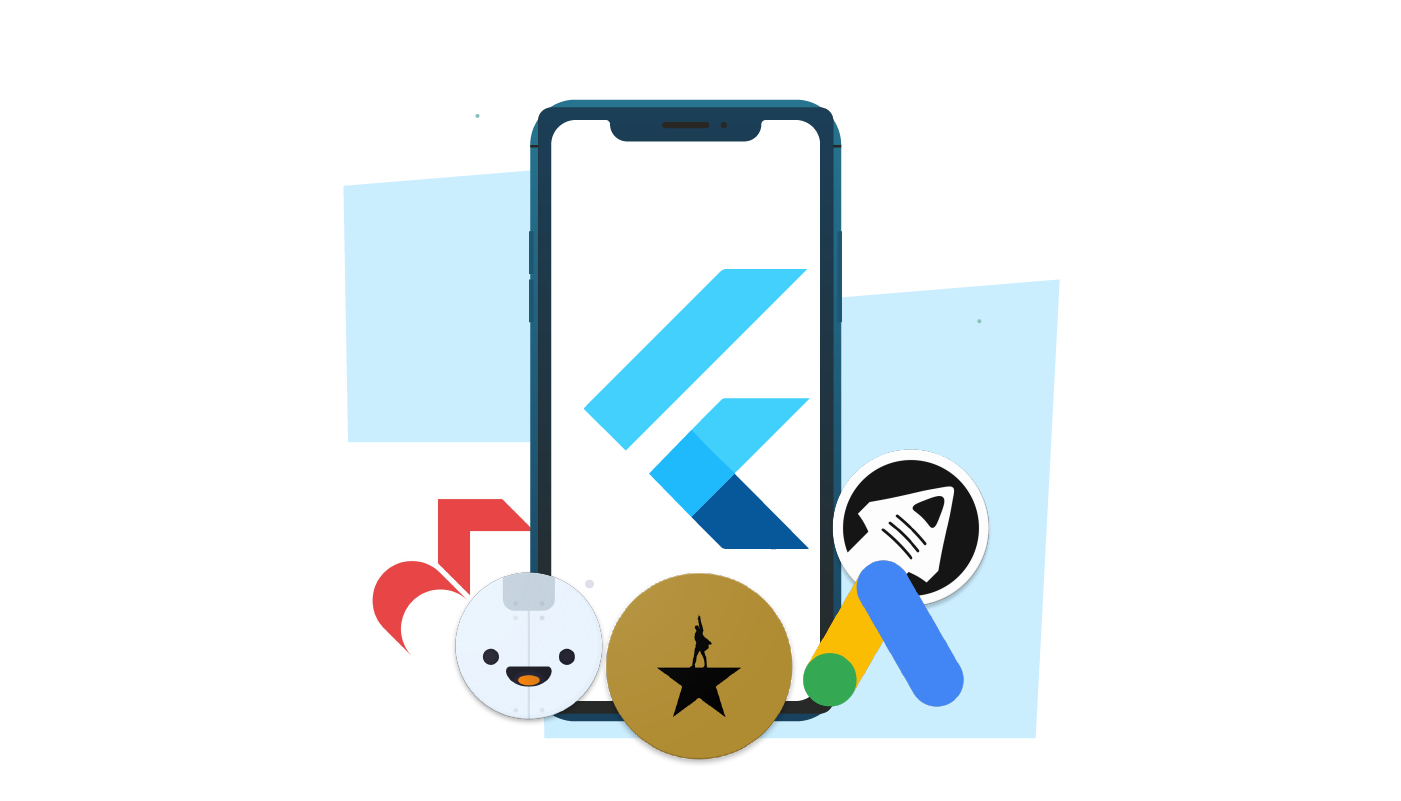
What’s Revolutionary About Flutter?
Dart
Dart is a new statically typed programming language that is optimized for faster objects creation and destruction, which makes it perfect for UI development. Along with being a compiled language, it can also transpile into JavaScript to support the development of RIAs and functions for cloud platforms (like Firebase). In such a way, Flutter equips developers with all the necessary tools for full-stack development, starting from back-end services and APIs to consumer applications.
Everything is Widget
Widgets are important components of any mobile or web application. They should look appealing, perform fast and respond to requests in order to ensure users acquire seamless experience.
Flutter takes a brand-new approach to widgets for cross-platform mobile frameworks. Instead of using platform widgets or DOM WebViews, it creates its own elements that are highly extensible and written with Dart, thus easily customizable. Examples of widgets in Flutter may include text, container, row, stack and others. In contrast to React Native (and some other frameworks), Flutter does not require a bridge into the native platform layer to render UI with platform-specific UI SDKs.
Layout
Flutter started with founders’ attempt to revolutionize the layout structure. The Chrome team at Google stepped on the discovery path to find out whether a faster renderer can be built, provided a traditional layout model is ignored. After several weeks of experiments, engineers came to eye-opening conclusions:
- Each widget can have its own layout model with simple rules and structure.
- Since each widget does not require any sophisticated models and any kind of underlying platform-specific components or long-run lists of rules, a layout can be heavily optimized.
- If you turn almost all objects into widgets, the layout can be simplified even further.
These principles lied in the core of Flutter philosophy and helped the team to create an easy-to-understand SDK, which is widely applied to build apps that look and feel as native on any platform, screen or device.
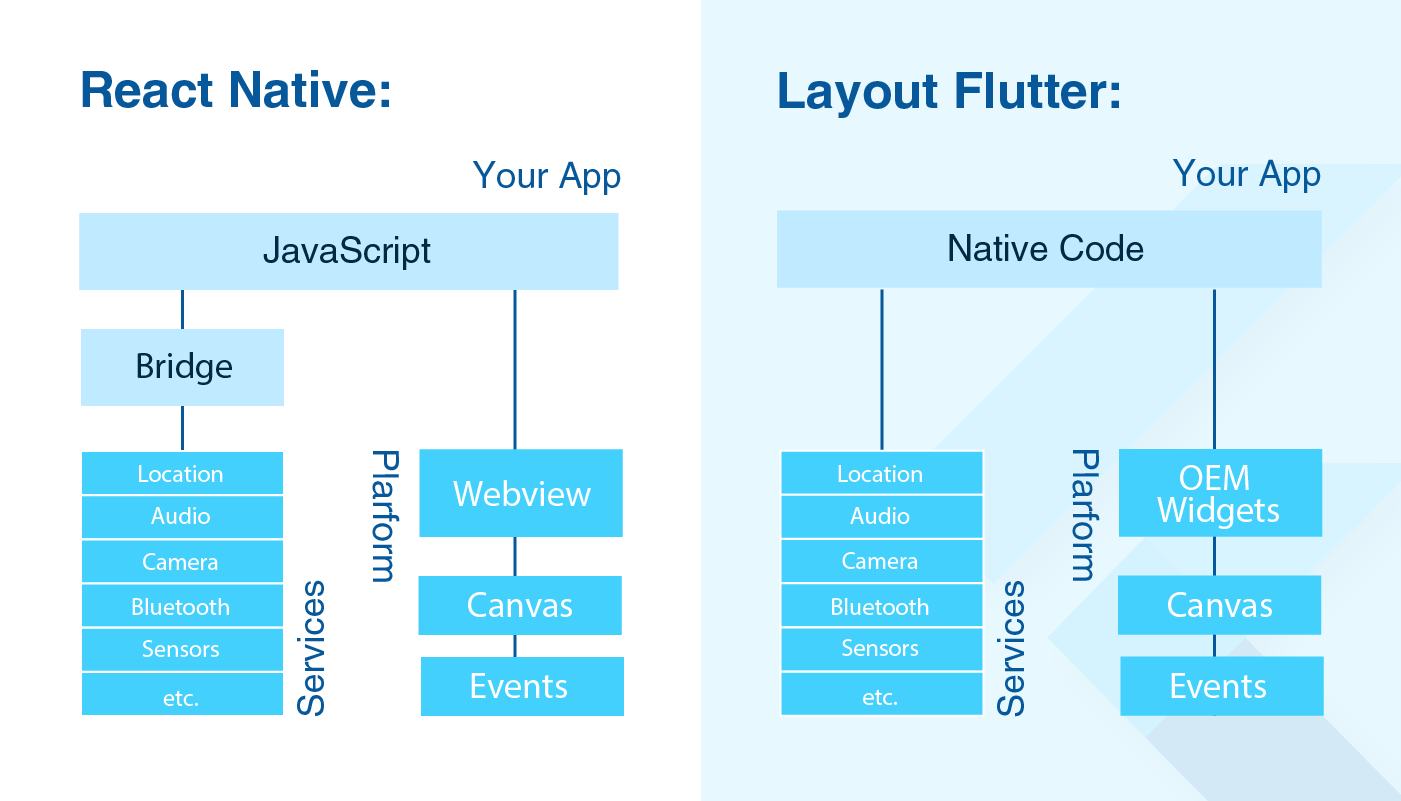
Why Should You Choose Flutter?
1. High Performance. The app’s performance can be measured with the help of various metrics: CPU usages, frames per second, an average response time, etc. Flutter provides a consistently smooth and clear image with a stable rate of 60 fps, while its rivals, such as Xamarin or React Native, can hardly do 58 fps. Cross-platform solutions developed by LITSLINK demonstrate exceptional performance and work smoothly on all devices.
2. Fast Development. For developers, building a full-fledged app with Flutter is faster as it means more dynamic coding. Since software engineers do not need to write a separate codebase for each platform, they can pay more attention to the app’s performance, features, etc. A reputable Flutter App Development Company can utilize these time-saving aspects to deliver projects more efficiently. Furthermore, Hot reload function enables developers to make changes in the code and see them implemented in the app within several (mili)seconds. It works by sending the updated source code files into Dart Virtual Machine. Right after VM processes changes, Flutter immediately rebuilds the widget tree so that you can view the effect of your changes in the codebase. Hot reload fosters teamwork and strengthens collaboration between the development and design teamы as both of them can work simultaneously to get the desired UI.
3. Cost-efficiency. For business owners, Flutter stands out as a cost-effective solution that reduces nearly 60% of development costs. Due to its time-saving benefits, it provides you with a chance to shorten your time to market and get your app released on both platforms simultaneously. The earlier your app reaches the market, the higher the chance for it to resonate with your target audience.
4. Custom Design. While Xamarin and React Native handle UI drawing by wrapping platform-specific native components, Flutter is much more convenient in building appealing UI interfaces. This mobile app SDK has its own render engine that allows the creation of custom design for Android and iOS. When you work with other cross-platform development tools, you should keep in mind that some features are supported by one platform or another. Thus, you do lots of testing on different devices and screens to make sure your product does not look broken. However, with Flutter, you feel much safer as you can easily extend and customize elements to your users’ needs, which significantly reduces the testing time.
5. An Open-source Tool. Flutter is an open-source SDK built by Google, which means developers can enjoy countless possibilities of customizations, starting from materials and then end up with animation and gestures.
What Are the Pitfalls?
1. Recruitment Issues. With all the benefits Flutter delivers, you don’t have to rack your brains which technology to choose for your next project. Nevertheless, be prepared to take some time to find an experienced specialist. Since Flutter is a relatively new tech, there are not so many seasoned specialists out there. Thus, the recruitment process might take a bit more time than you expect. LITSLINK has a strong team of high-end software architects, who provide top-notch Flutter development services. So, if you bear a great idea for your app in mind, contact us to get high-quality consultancy.
2. Smaller Community. Compared to its nearest cross-platform counterpart — React Native, Flutter has fewer contributors on the net. So, if your team tackles some unexpected issue, it is most likely they won’t find a ready-made solution to solve it asap. Therefore, you’ll have to allocate some time to resolve an issue, which might slow down the development process a bit. However, let’s look at the bright side of things! Such challenges are given to hone the engineers’ skills and make them more experienced in this tech.
3. Limited Support from 3rd parties. Compared to React Native, Flutter is not as widely supported by various platforms as its rival. For instance, you might face difficulties while integrating region-specific payment systems into your Flutter app. As a rule, such platforms provide native SDKs for iOS, Android, or Web. Since React Native has a bigger community, you are prone to find an already developed module. With Flutter, you have to plan your time ahead and include this solution to the development costs. The same is true for PaaS and SaaS. However, today more and more libraries and modules are being added to the Flutter ecosystem, which is expected to ease the developer’s work and speed up the process.
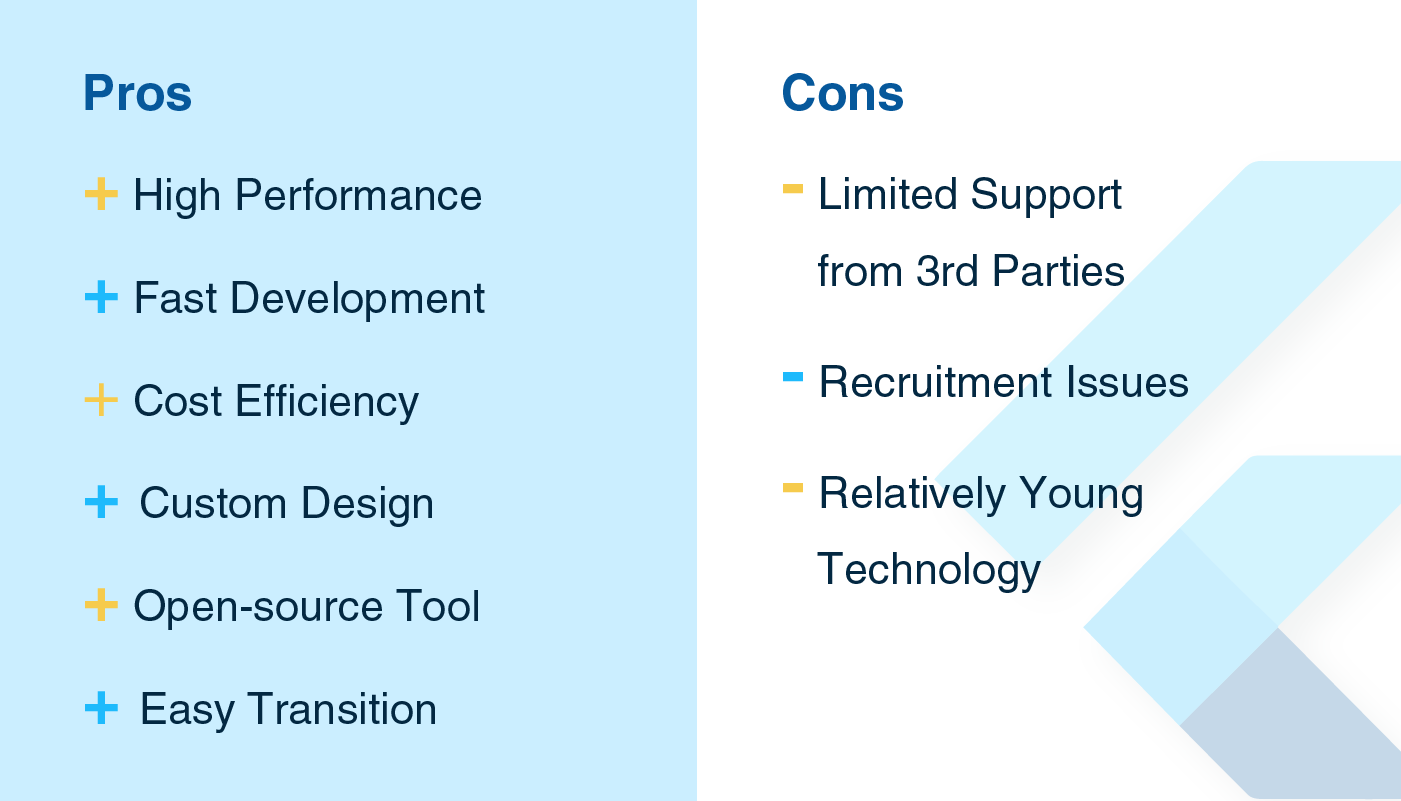
Wrapping Up: To Build or Not to Build?
If you want to build an app for Android and iOS, go with Flutter, and you’ll reap lots of benefits: high performance, custom design, cost-efficiency and much more. With this powerful SDK, you gain full control over each element, which means you can customize it to your users’ needs and wants. Furthermore, your team writes only a single codebase for Android and iOS, which reduces the development time and shortens your time to market. Also with a new release from Flutter, your app can be run on the web and desktop (and other platforms are expected to be added soon). However, if your target audience is more focused on a particular platform, it’s better to opt for native development.



